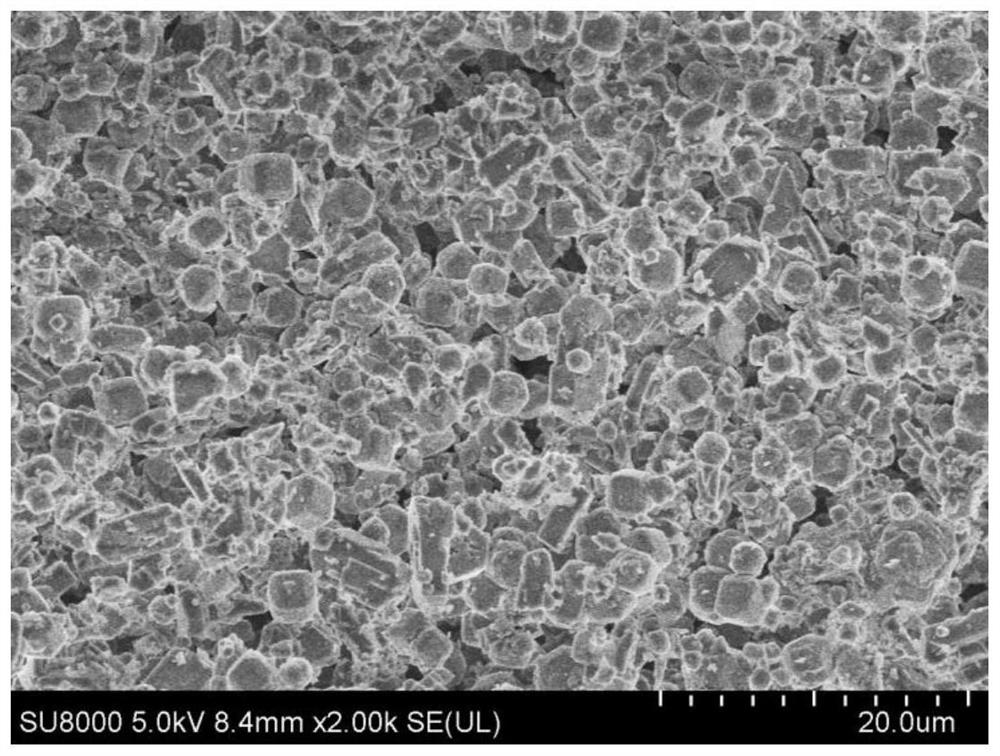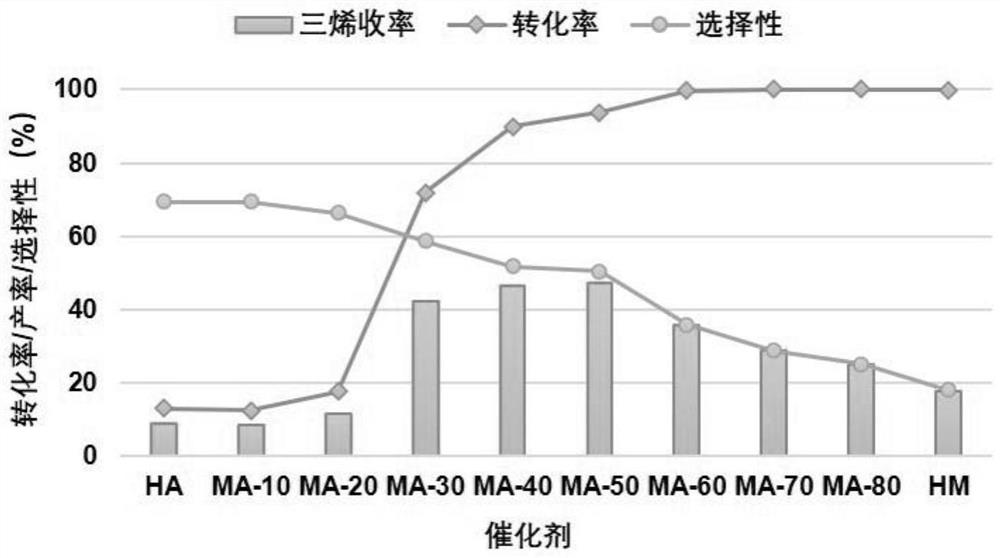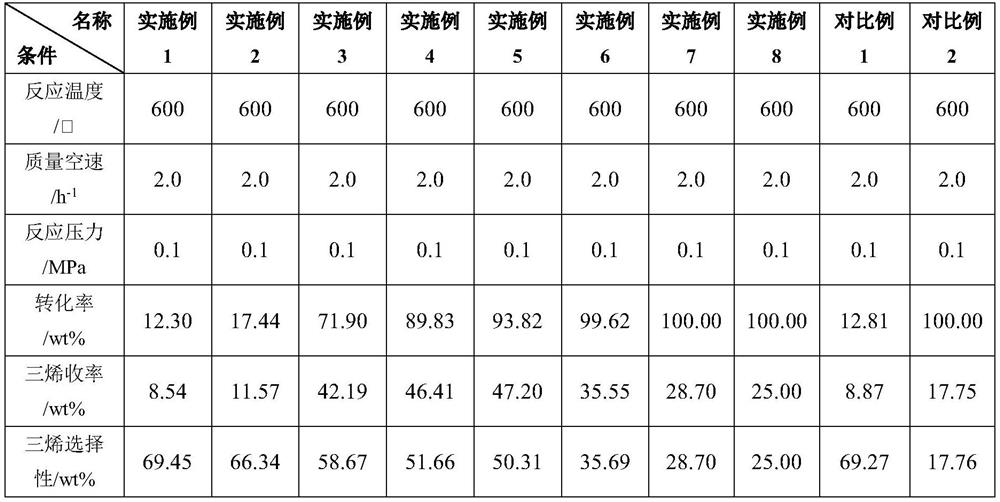Composite molecular sieve catalyst for increasing yield of low-carbon olefins through light hydrocarbon cracking and preparation method thereof
A composite molecular sieve and low-carbon olefin technology, which is applied in molecular sieve catalysts, hydrocarbon cracking to produce hydrocarbons, chemical instruments and methods, etc., can solve the problems of low triene yield, large carbon emissions, and high construction costs
- Summary
- Abstract
- Description
- Claims
- Application Information
AI Technical Summary
Problems solved by technology
Method used
Image
Examples
Embodiment 1
[0016] Take 20 g of LTA molecular sieves and place them in a beaker, add 160 mL of the prepared 1 mol / L ammonium chloride solution, mix and stir evenly. Put the mixed suspension into a round-bottomed flask, raise the temperature to 80°C, heat and stir for 12 hours, separate the solid and aqueous solution by high-speed centrifugation, decant the upper aqueous solution to obtain the lower white solid, and wash it with 90mL deionized water repeatedly 3 times. The obtained white solid was added to the prepared 1mol / L ammonium chloride solution to repeat the above steps twice, and the white solid was obtained by centrifugation, dried at 80°C for 24h, taken out, and baked in a muffle furnace at 400°C for 24h. Calcined at 600°C for 2 hours to obtain hydrogenated LTA molecular sieves.
[0017] Take hydrogen-type ZMS-5 molecular sieve and hydrogen-type LTA molecular sieve, mix according to the mass ratio of 1:9, add 30 times the mass of deionized water, at room temperature (20 ° C ~ 25...
Embodiment 2
[0019] In this example, the mass ratio of the hydrogen-type MFI molecular sieve to the hydrogen-type LTA molecular sieve is 1:4, and other steps are the same as in Example 1, which is designated as MA-20.
Embodiment 3
[0021] In this example, the mass ratio of the hydrogen-type MFI molecular sieve to the hydrogen-type LTA molecular sieve is 3:7, and other steps are the same as in Example 1, which is designated as MA-30.
PUM
 Login to View More
Login to View More Abstract
Description
Claims
Application Information
 Login to View More
Login to View More - R&D
- Intellectual Property
- Life Sciences
- Materials
- Tech Scout
- Unparalleled Data Quality
- Higher Quality Content
- 60% Fewer Hallucinations
Browse by: Latest US Patents, China's latest patents, Technical Efficacy Thesaurus, Application Domain, Technology Topic, Popular Technical Reports.
© 2025 PatSnap. All rights reserved.Legal|Privacy policy|Modern Slavery Act Transparency Statement|Sitemap|About US| Contact US: help@patsnap.com



